If you’re at all familiar with military surplus weapons, you’ve likely heard all about how underpowered the M-1 carbine is. I mean, it’s just understood, right? Well, maybe not. If you’ve ever shied away from buying a carbine, you might want to check out the video linked below, from the always-thorough Paul Harrell.

Paul’s video covers other aspects of the carbine’s less-than-stellar reputation, such as accuracy and reliability, but for this article, we’re going to focus on effectiveness. I promise to return to the other topics in later articles based on my own research with the 1944 IBM-manufactured carbine I recently bought. But I doubt I could match Paul’s effectiveness tests, so we’re approaching that topic though his video. Onward.
Muzzle Velocity: Better Than Advertised
Paul says that effectiveness is measured with a combination of velocity and foot/pounds of energy, which is the real bottom line. It’s often stated that, despite its reputation, the carbine compares favorably with the .357 Magnum. Since the carbine was initially designed to replace the sidearm for tankers and rear echelon troops, that’s a pretty good start. But the M-1 carbine ended up being used on the front lines of World War II and Korea, especially by paratroopers, so it’s fair to consider it in that role too.

Paul starts with velocity tests using several brands of ammo. To make it interesting, he tests .357 Magnum cartridges using a Henry carbine with a 20-inch barrel and compares them to the performance of rounds fired from the M-1 Carbine with an 18-inch barrel. Here are the raw numbers in terms of mean velocity for each load:
110 grain .30 Carbine fired from the M-1:
- Remington Green/White: 1976 fps
- Remington Green/Yellow: 1983 fps
- Sellier & Bellot: 1947 fps
- Hornady Custom: 2018 fps
- Hornady Critical Defense: 1990 fps
The only energy foot/pounds that were calculated were for the Hornady Custom, which had the highest mean velocity. It worked out to 994 foot/pounds of energy.
Now for the .357 Magnum.
There are different loads here, so I’ll be specific:
- Winchester White Box 110 Grain JHP: 1638 fps
- Remington Green/White 125 Grain: 2127 fps
- Federal American Eagle 158 Grain: 1719 fps
The energy foot/pounds for the 125 grain Remington came out to 1256 foot/pounds and the Federal was 1036 foot/pounds.

Paul concludes from these numbers that, with the right ammo choices, or wrong in the case of the .357, the .30 carbine can be in the neighborhood of the magnum round. But he notes that other factors have to be weighed. The .357’s larger caliber and greater bullet weight, in the case of the Remington and Federal loads, means they can retain their energy for greater penetration than the .30 Carbine, even if they have a lower velocity. But he also says that power doesn’t necessarily equate to effectiveness, which he addresses shortly.
“What the Hell Were They Even Thinking?”
First, however, Paul asks where the M-1 Carbine’s reputation for weakness comes from. Given its performance alongside the .357 Magnum fired from a 20-inch barrel, that reputation seems ill-deserved. After all, the .357 Magnum is considered to be a powerful handgun cartridge. From a carbine, with proper ammo choice, the magnum is also perfectly adequate for game such as deer at reasonable distances. If all that is true, why the poor reputation for the .30 Carbine?
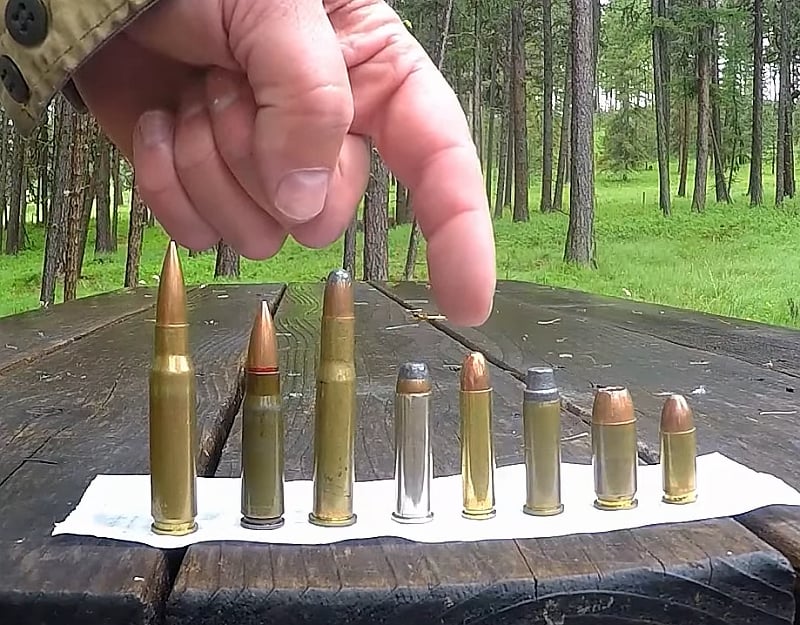
Paul notes that the .30 Carbine cartridge “is obviously not as powerful as some of its contemporaries like the .303 British, the 7.62x54R, the 8mm Mauser, and the 30.06. But it has a reputation for being pitifully weak. For being grossly underpowered.” He has heard people say angrily, “What the Hell were they even thinking when they designed it?”
Well, he has some opinions on where that reputation comes from. In Paul’s opinion, the first source of the .30 Carbine’s weakness is the result of what he calls “overly confident conjecture backed up by fictional data.” Okay, so what does he mean by that? Basically, he says it describes “the propensity of military personnel to tell tall tales.”
Apples and Oranges
At the time, the US military also used a particularly underpowered version of .38 Special. That weakness was well substantiated. If you look at the .30 Carbine alongside the .38 Special, they look very similar, though the carbine round is a bit longer and the .38 a bit thicker due to the larger caliber. This led to reasonable concerns about the carbine round’s power. But, instead of being expressed as a concern, it was more often than not stated as something like, “Look at the size of that round, it’s not even as powerful as the .38!” You know that happens.
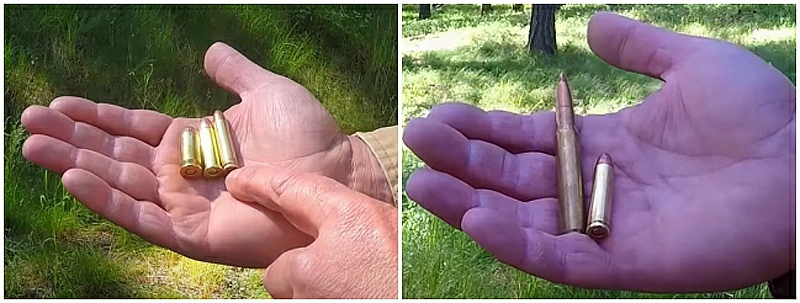
If challenged, the person making such a declaration may make up fictional data to support his assertion, such as saying he had to shoot an enemy soldier five times with the carbine to bring him down. This is just an example, but you get the idea. Stuff like that happens every day. That lie is believed and repeated until lots of guys tell the story as their own. Those guys become the mysterious “they” and people who don’t know any better take it for truth. Paul believes that process is partially responsible for the carbine’s bad reputation. But it’s not the only thing.
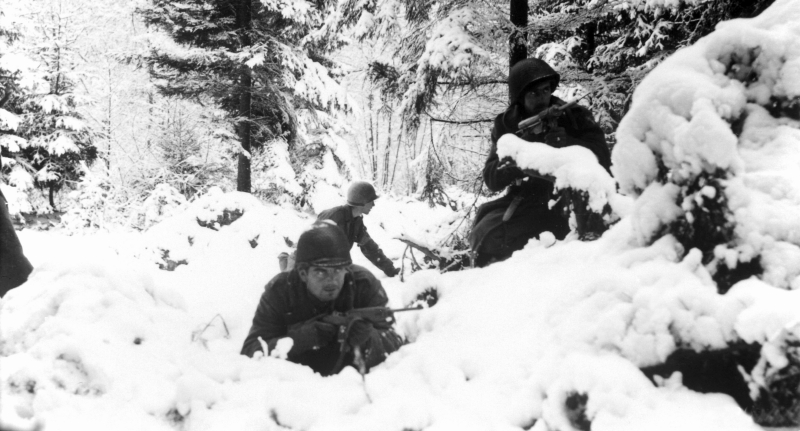
Number two is much easier to account for and really pretty understandable. By the time the carbine entered service in 1942, the 30.06 had been the US military’s frontline battle cartridge for almost forty years. Lay the two rounds side by side and you can understand why there were doubts. But, as Paul sagely notes, less power doesn’t always mean inadequate power and smaller doesn’t necessarily mean too small. Keep in mind the carbine was meant to be an upgrade from a pistol and give certain troops better accuracy at longer range. Next to the 30.06, which isn’t a fair comparison, the .30 Carbine round couldn’t help but look small and weak.
Oops…
Finally, Paul relates something that most of us probably don’t know. I certainly hadn’t heard it before. When he was a boy, Paul took a hunter education course required by his state of residence. Part of that course was a manual, which he got to keep, with a comprehensive ballistics chart put out by Remington.
It was very useful and all that, but it had a misprint that was allowed to stand for years. It reported the .30 Carbine’s mean velocity to be 1310 feet per second, which we have seen is about 600 fps slower than the round actually is. That’s kind of a big deal. Paul saw the same information in other manuals and even reloading guides. Who knows how many states used that information in their own publications and how many thousands, or tens of thousands, of people saw it and took it for gospel?

The misprint in that manual caused Paul to ditch his first M-1 carbine and advise other people not to buy one because it was underpowered. It likely caused a bunch of other folks to do the same.
Lead vs. Pork Chops
Finally, Paul gets to the part where he stacks up the .30 Carbine head-to-head with the .357 Magnum and even the 5.56 NATO cartridge. For that, he uses his famous meat target. For the uninitiated, the meat target consists of a leather jacket to simulate skin, pork chops for pectorals, pork ribs, a bag of oranges for lung tissue, more pork ribs in the back, and four layers of t-shirt on the front and back. It’s backed up by three folded fleece blankets to measure over-penetration. It’s really pretty effective and the main reason, along with the chronograph, that I said his tests are better than what I could do.
You really need to watch the video to get the full effect, but I’ll provide photos here to give you the short version.
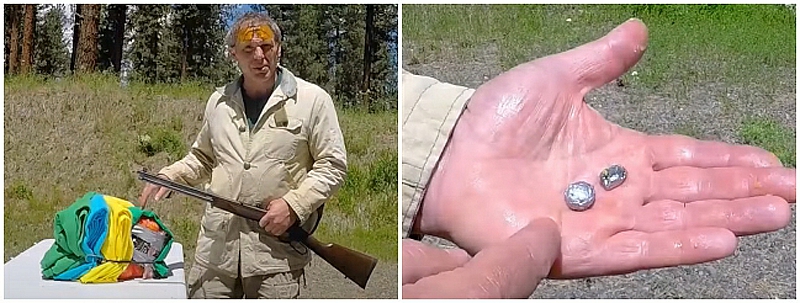
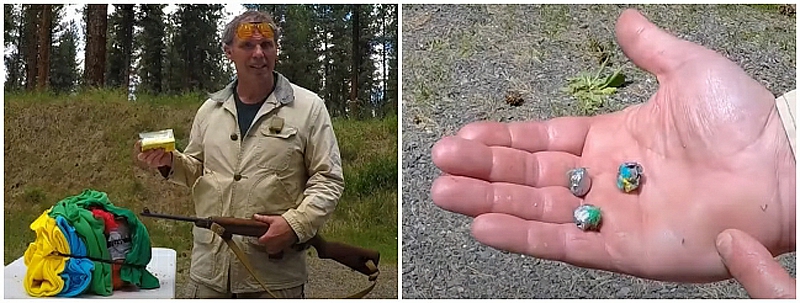

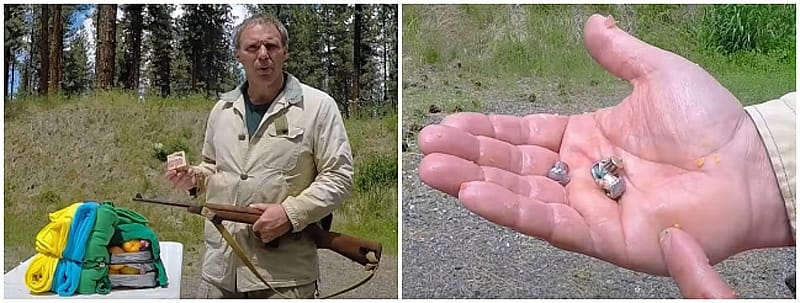

So, after all that, it looks like the M-1 Carbine really isn’t as weak as “they” say. With proper ammo selection, and realistic expectations, it seems like a handy little rifle that performs well for what it is and looks like a whole lot of fun. What do you think? Do you agree with Paul? Disagree? Have an M-1 Carbine story of your own? Hit us up in the comments and happy shooting, y’all.


